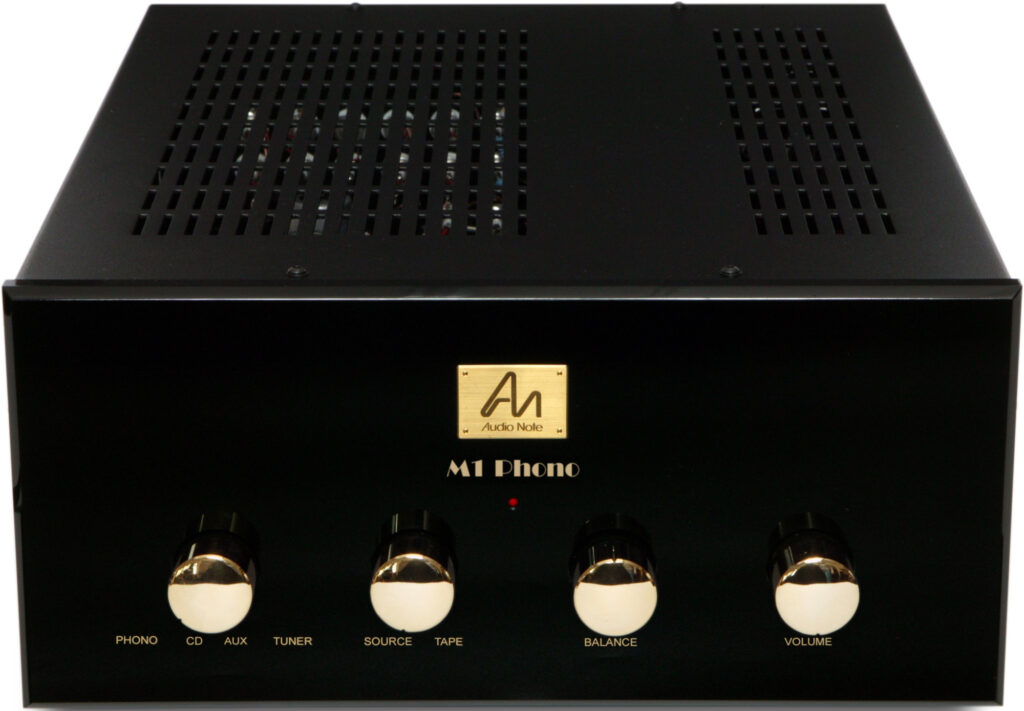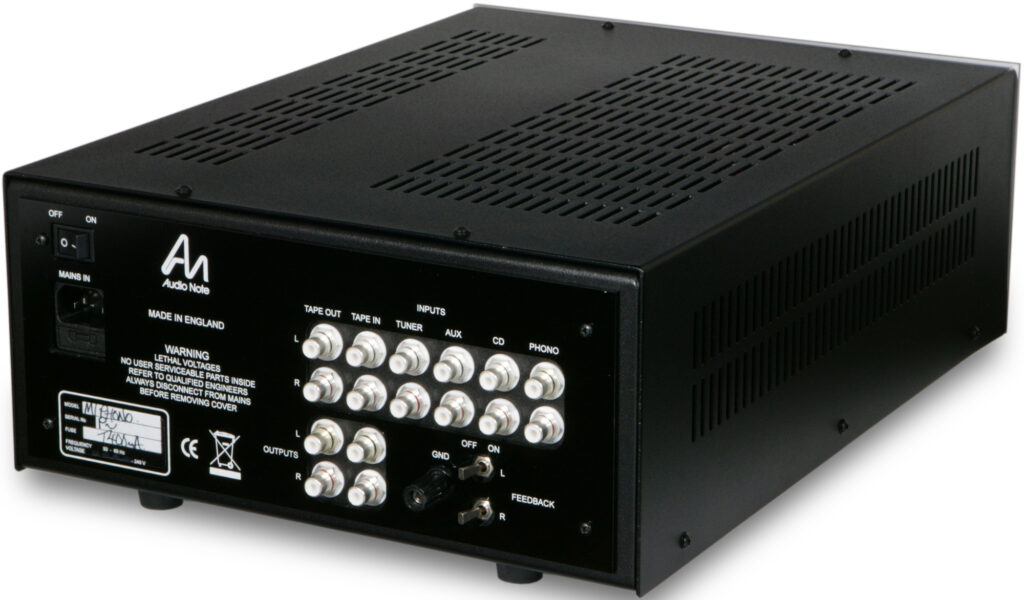One of my first reviews for Dagogo was back in 2008 when I covered the Audio Note OTO Phono SE single-ended pentode integrated amplifier. I had purchased the amplifier in 2003 and I still own it to this day. What makes the Audio Note OTO, along with their SORO and Meishu integrated amplifiers, different than most competing integrated amplifiers is that they are essentially Audio Note separate preamps and power amps units sharing one case. The OTO Phono SE integrated amplifier is a combination of the M1 phono preamplifier and the P1 SE single-ended pentode stereo power amplifier in one box with one power outlet to the wall.
The advantages to buying integrated amplifiers over separates include space savings and price. There are further advantages, such as a shorter wiring path and no requirement to purchase interconnect cables to join the preamp to the power amp. The advantage to buying separates is that it allows you to make future upgrades or to let you use different power amplifiers or preamplifiers when the need or opportunity arises.
Audio Note probably has the widest range of audio products in the industry, and that can make things rather confusing for anyone who first researches this brand. The OTO integrated amplifier is one of eight integrated amplifiers listed on their website, but there are also eight versions of the OTO integrated alone. Thankfully, the M1 comes in only three options. The M1 Line (2,770 USD, sans phono stage), the M1 Phono, and the M1 RIAA (2,770 USD), which is only a phono stage. And you have a choice between Black Acrylic and Anodized Aluminium casework.
As you can probably gather, this preamplifier, along with the OTO, has been selling for quite a long time and, while they have been upgraded over the years, you are not going to find modern touches like an onboard DAC or home theatre pass through or subwoofer outputs or HDMI; indeed, it doesn’t even come with remote control. The M1 Phono comes with a MM valve Phono stage. You will need an SUT or step-up transformer if you use an MC cartridge. It has three line inputs and tape in/out for recording. On the back, there are also feedback switches near the ground loop connection that are used if you find the volume control too sensitive or you are using long runs to your power amplifiers. On the front, the M1 comes with four selector knobs for INPUT, SOURCE/TAPE, BALANCE, and VOLUME. It’s simple and straight to the point.
The M1 is nicely made and all the selector knobs feel solid in operation and of good quality. Compared to my former Line Magnetic 219IA integrated ($7,500) the M1 volume control is more solid and doesn’t have the wishy-washy feel when turning. To be fair, the 219IA offered remote control, so you are less likely to make physical contact with the volume knob. The same can be said for the wonderful Pure Audio One ($10,000) Integrated amplifier. That volume control felt lightweight as well but the remote control bypasses your touch points.
The more costly Audio Note M3 preamp and models above it use two stepped attenuators, one for each channel, and they have the most solid feel of all. The in-house-made Audio Note stepped attenuators are superb but they require more user attention to ensure setting both channels to the same volume level. And because they are stepped, they can become somewhat noisy if dust gets onto them when making volume adjustments. It does not affect sound quality mind you, but it will require some effort to keep the volume pots clean if you live in a dusty environment.
I had been using the M3 Phono as my reference preamp for a couple of years when I decided to upgrade to the M6. Audio Note largely builds to order with the higher-level items in their product range. With the pandemic, the wait time was to be around 5-6 months for the M6 Phono. My M3 was an older version that used twenty-three resistors while current versions use thirty-six steps. This, if you were wondering, is why I did not review the M3 as it is no longer a current model.
Placing the M1 into my system and firing it up after two years with the M3 was a shock, and not in a good way. The M1 sounded like a discombobulated mess in direct comparison. The M1 sounded lean and thin and somewhat bright. I left it on for about eight hours and used it for TV and movies for the rest of the week. Then I went back to listening to music. Things were considerably better the second week. The M1 still never captured the density of the presentation that the M3 possessed, the M1 always seeming brighter and lighter in tone. If you remember my OTO review, you will note that I said the OTO was on the darker side of the spectrum. But as a separate preamp, the M1 goes the other way with a neutral and more open presentation, although this may be attributable to the power amp and loudspeakers being used for this review.
- (Page 1 of 2)
- Next page →






